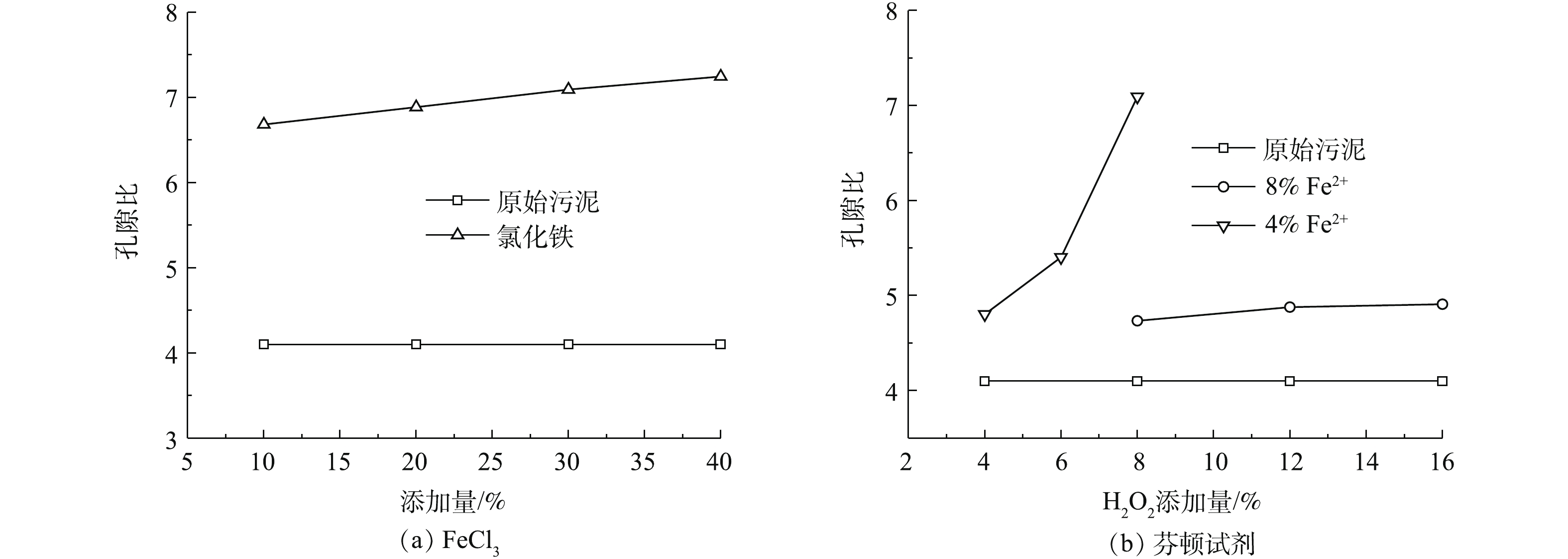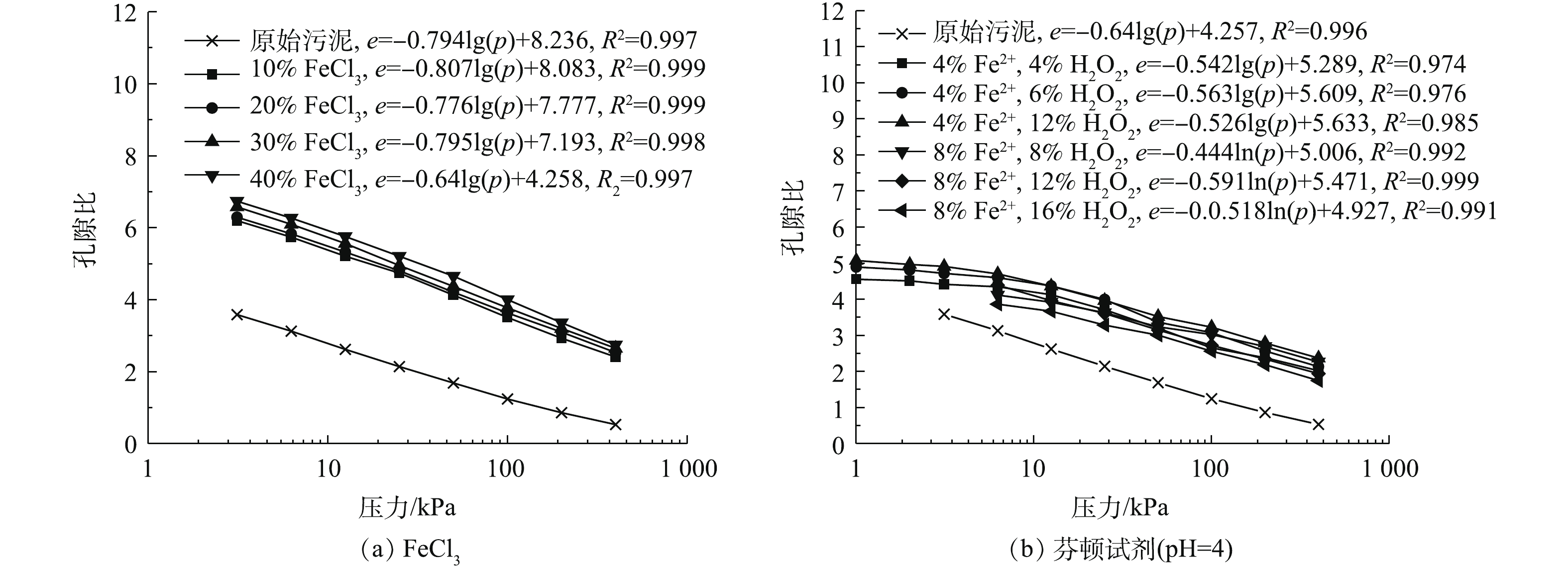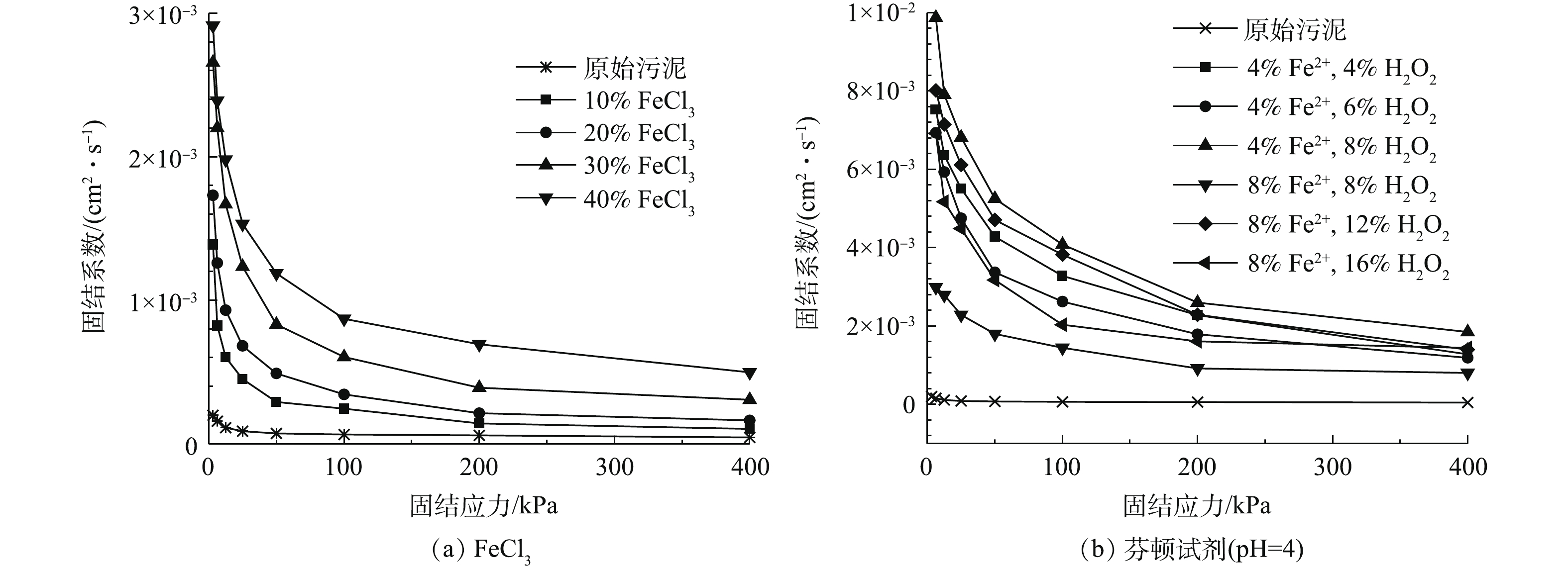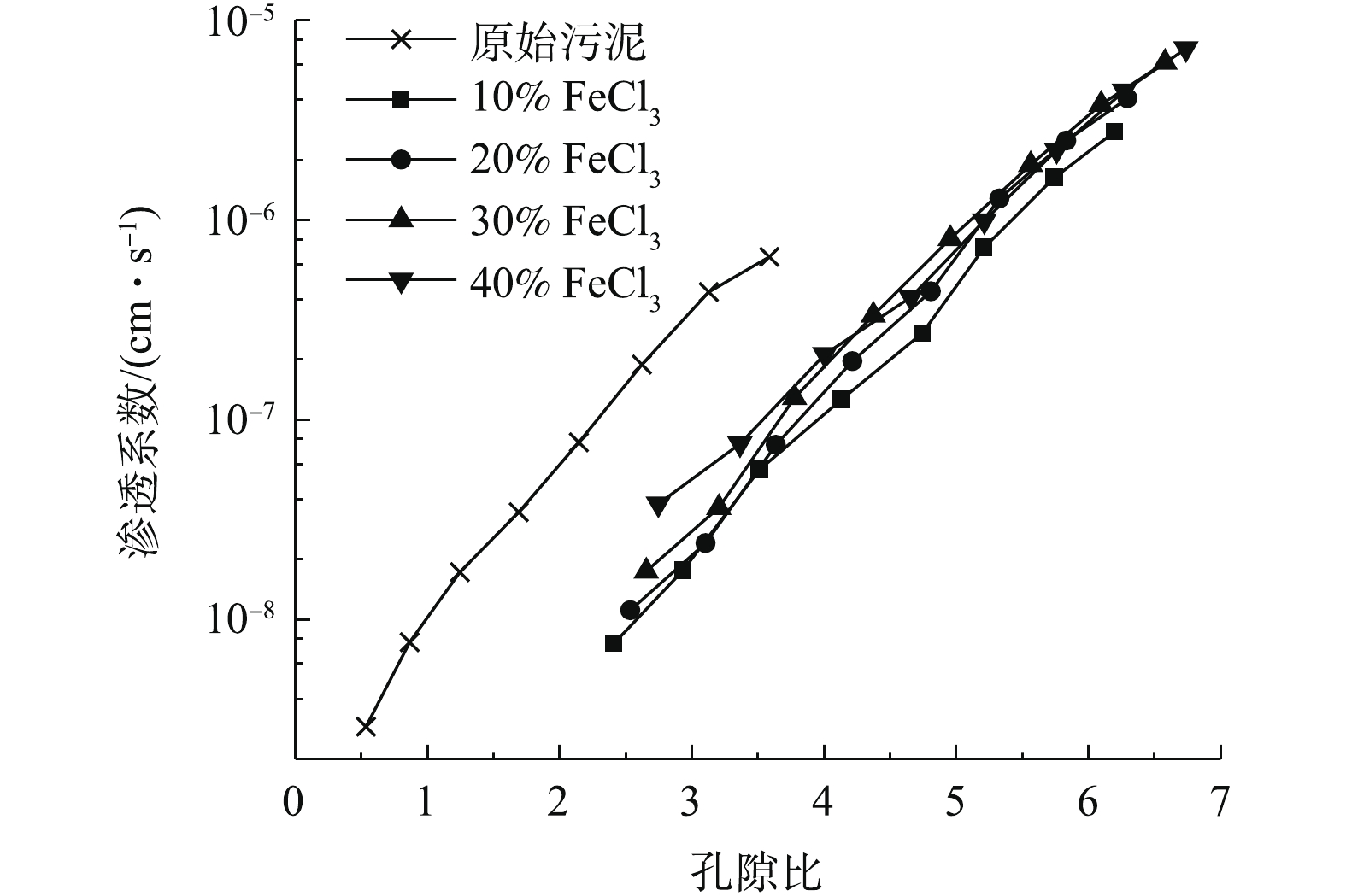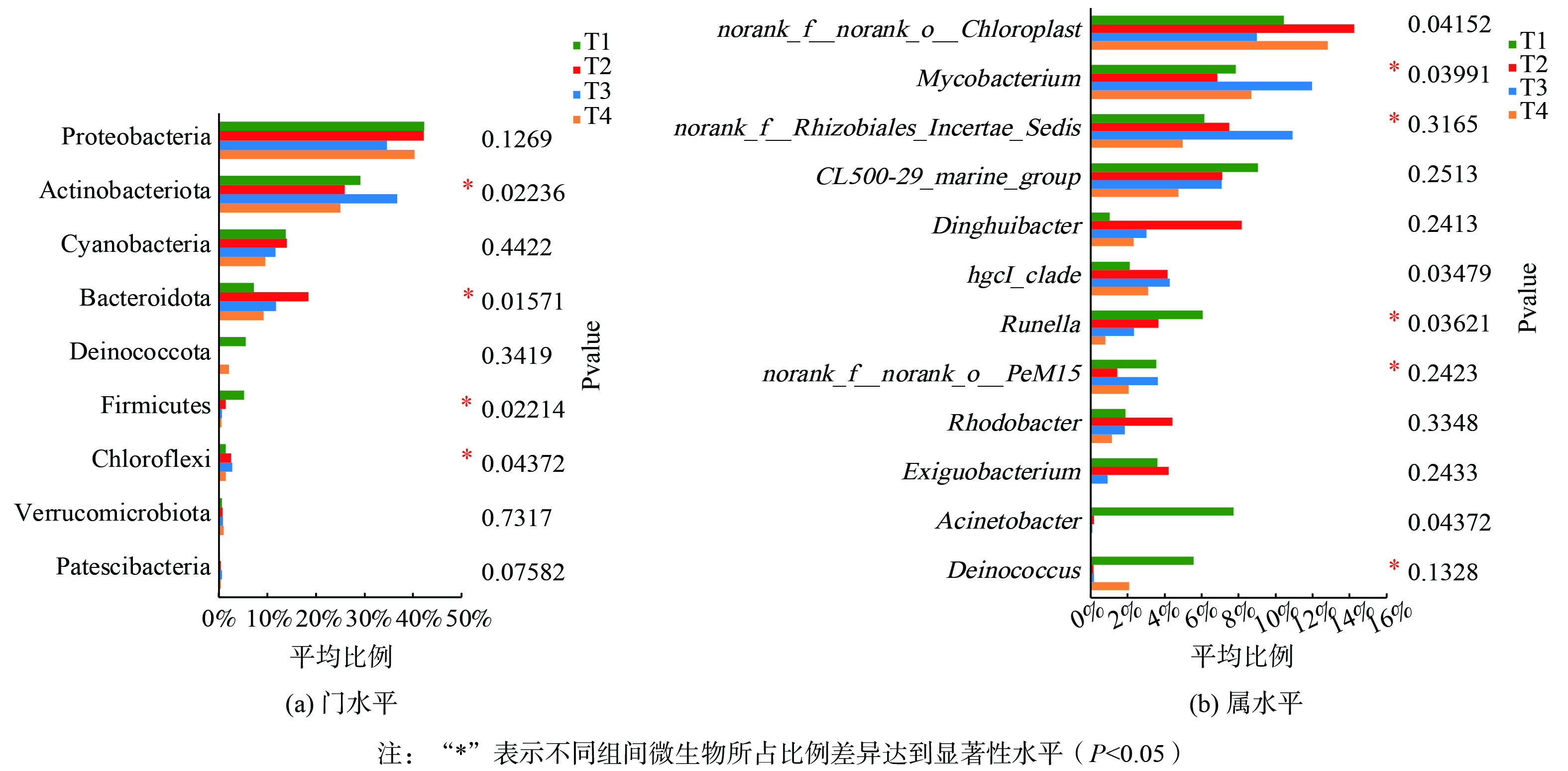-
景观水体尤其是城市景观水体大多为静态、流动性较差的封闭式缓流水体,具有水域面积小、水环境容量小、自净能力差、易受污染等特点,往往面临风险较高的水质恶化等问题[1-3]。底泥氮磷营养盐的释放是造成水体内源污染的重要因素,控制景观水体及沉积物内部污染物负荷已成为景观水体治理的关键。
原位处理技术和异位处理技术在景观水体底泥处理中运用广泛。物理方法比如底泥疏浚是最直接、有效的异位内源污染治理技术,可快速将受污染的沉积物从水体中清除,增加水体容量、改善水质情况;但其后续底泥处理量大、运输困难,工艺流程复杂且资源化利用有限,在时间空间上具有很大限制,成本高且不易操控[4],还存在破坏水底生态系统平衡,易造成二次污染等风险。投加化学试剂 (如铁铝盐、过氧化钙、锁磷剂等) 是常见的原位化学方法,能紧急修复污染水质,但是有增加水体毒性的可能性[5-7]。底泥覆盖是常见的原位物理处理技术,国外已有将覆盖技术成功应用于治理受污水体的案例[8-10],我国学者也开展相关研究。在近年研究中,天然矿物由于具有价格低廉、来源较广等优点,被广泛应用于实际污染底泥的治理中[11],如方解石、沸石、石灰石、白云石、伊利石、麦饭石等。这些材料应用于覆盖底泥中,对抑制氮、磷释放效果明显,清洁土壤比如红壤也由于良好的絮凝吸附性能、分布较广等优点被逐渐用于水体治理中[12]。学者普遍认为,底泥中存在着大量的可生物利用的营养物质, 这些营养物质可被生物通过生命代谢活动进行吸附、降解、转化,从而促进其生长[13-14] ,污染底泥资源化在水生态处理中有良好的运用前景。沉水植物可利用底泥中的N、P营养盐,还可通过影响微生物的代谢来影响营养物质的循环,在稳定生态系统和净化水体方面有特殊作用。
针对水体污染程度、地理位置等情况,选用处理效果好且经济效益高的底泥改造材料很有必要。紫色母岩是一种自然沉积岩,在西南地区广泛分布,矿物成分较砾石复杂,过去的研究大多集中在紫色母岩风化物理颗粒变化和破碎成土[15-16]、土壤营养肥力[17]等反面。近年来,对紫色母岩的研究逐渐深入到了其吸附性能方面。黄雪娇等[18]发现使用重庆地区常见的蓬莱镇组、沙溪庙组、飞仙关组和遂宁组紫色母岩作基质均能有效降低水体氮磷及有机物含量,其中蓬莱镇组效果最佳。石灰石(主要成分CaCO3)是人工湿地的常用的天然矿物基质,对水体污染物有很好的去除作用[19]。白云石(主要成分CaMg(CO3)2)与石灰石结构相似,被应用于水体治理中,是低成本的除磷材料[20]。
微生物是水生态环境中重要的组成部分,在氮、磷营养盐消减过程中发挥着重要作用[21-22],水环境也会影响微生物群落结构或丰度,了解微生物在水体氮磷变化中的分布特征、生态功能和作用等对水环境修复有重要意义。过去许多研究多集中在改造材料提高底泥吸附性能或者对沉水植物的生理生态影响上[23-25],而结合水环境物化性质变化与微生物群落结构变化的研究较少。为此,本研究选取蓬莱镇紫色母岩、石灰石、白云石作为底泥改造材料,通过阶段性的水质监测分析不同改造材料对水体氮磷去除效果及差异,结合水体元素质量浓度变化和微生物群落结构变化探讨差异的原因,以期评估出低耗高效的底泥改造材料,并在一定程度上丰富底泥改造的应用基础理论,同时为同类型污染水体底泥改造材料的选择提供参考。
-
供试底泥改造材料蓬莱镇组紫色母岩采自重庆市巴南区界石镇附近的倒置低山区,于通风干燥处风干后去除其中树枝、落叶等杂质,过60目筛备用;石灰石与白云石均购自于灵寿县北堤下村矿工厂,经干燥后磨碎,过60目筛备用。改造材料基本性状见表1。矮生苦草(Vallisneria natans (Lour.) Hara)为实验室养殖,挑选长势良好并相近的植株使用去离子水清洗表面杂质,每10株一组备用。底泥和试验用水取自西南大学崇德湖,供试底泥基本性质为全氮2.69 g·kg−1、全磷11.75 g·kg−1、pH6.9。
-
采用5 L斗抓式底泥采样器 (购于绍兴市上虞区亦晨仪器经营部) 于西南大学崇德湖采取底泥,静置至底泥与上层水体分离,倒去表面水体,过0.25 cm网筛去除底泥沉积物中的石块、腐叶等杂物。加入8 cm底泥至聚乙烯圆桶 (上口径∶下口径∶高=45.5 cm∶34.2 cm∶56.4 cm) 内,分别铺设2 cm石灰石 (T2) 、白云石 (T3) 与蓬莱镇紫色母岩 (T4) ,以不加任何底泥改造材料作为对照 (T1) ,加水略微淹没后静置24 h,待上覆水澄清后将10株长势相同的矮生苦草均匀种植于各桶内,加入200 L混合湖水至桶高40 cm左右。每组设置3个平行处理。
待沉水植物生长稳定后 (35 d) 进行换水,倒出桶内水体,再平稳加入实验水体进行水质监测。每一次换水后在每天上午9:00室外静水条件下采用虹吸法于水面下20 cm、30 cm处混合取样进行为期5 d的水质监测,共监测4次。再按公式 (1) 计算氮、磷的去除率。
式中:A0表示上覆水氮、磷初始质量浓度,mg·L−1,At表示氮、磷浓度测定值,E代表去除率。
在室外静水条件下连续监测 (5 d) ,通过对水质变化的分析确定分别在 0 h、12 h、36 h、60 h、84 h、108 h按照上述相同方法取样,水体初始 TN为(3.67±0.09) mg·L−1、初始TP为(0.46±0.02) mg·L−1、初始NH4 + -N为(0.65±0.03) mg·L−1、初始pH为 (7.74±0.03) 。分析认为36 h时的处理情况值得进一步研究,故对该时刻数据进行详细分析测定。采用虹吸法在沉水植物叶片周围1~2 mm处少量多次采集混合水样,进行元素质量浓度测定和细菌16S rRNA测定。
-
水质指标均按照地表水水质指标分析国家标准进行测定。总磷测定采用钼酸铵分光光度法(GB 11893-89), 总氮采用碱性过硫酸钾紫外分光光度法,氨氮使用靛酚蓝比色法,pH测定采用玻璃电极法(GB 6920-86)。
水体元素质量浓度使用电感耦合等离子体发射光谱仪(ICP- 3000)进行测定。取2 L水样采用0.22 µm孔径聚碳酸酯滤膜进行抽滤 (每次抽滤前装置用一级纯水反复清洗) ,使用第2次抽滤后的水体进行元素测定。
在抽滤完成后,将滤膜置于-80 ℃低温保存,之后进行微生物组总DNA提取,目标片段PCR扩增。使用DNA试剂盒(Omega Bio-tek, Norcross, GA, usa)从样本中提取基因组DNA。DNA提取液在1%琼脂糖凝胶上进行检测,并使用NanoDrop 2000 UV-vis分光光度计(Thermo Scientific, Wilmington, USA)测定DNA浓度和纯度。细菌基因使用引物对338F (5'ACTCCTACGGGAGGCAGCAG3')和806R (5'GGACTACHVGGGTWTCTAAT3')通过ABI GeneAmp®9700 PCR热循环器(ABI, CA, USA)进行扩增。16S rRNA高通量测序在上海美吉生物医药科技有限公司进行,数据分析基于该公司所提供的云服务进行 (www.majorbio.com) 。
-
Office excel 2010用于实验数据整理并制图;SPSS 25.0用于单因素方差分析(One-Way ANOVA)和最小显著性差异检验(LSD),用Origin2019b绘图。
-
在沉水植物生长稳定后的第10、20、35和 55天分别以5 d为1个周期,进行了4次氮磷去除率的监测。如图1和图2所示,由于测定时间不同,各个周期间不同处理的去除率均有一定波动。这可能是由于气候变化引起的,但整体来看各周期内不同处理间的氮、磷去除率趋势较一致,这说明系统效果比较稳定。各处理对氮、磷的去除率均有一定提高,除了底泥吸附的作用外,苦草可通过直接吸收、过滤吸附等作用去除水体的氮磷[26]。不同底泥改造处理间有差异,T2、T3、T4处理在监测周期内中的监测时间对TP 的去除率均明显高于T1。在第5天 时,除T1外,对TP的去除率均能达到80%以上,T4处理对TP的去除率最高。T1对TN的去除率在各个监测周期内也明显低于其余3组,T3对TN的去除效果最好。这是由于除了苦草的作用外,底泥覆盖能抑制底泥中氮、磷营养盐的释放,同时对上覆水中氮、磷悬浮物颗粒吸附作用较强[11]。
-
水体中的磷主要依靠植物直接吸收、植物体吸附过滤和物理化学沉淀等途径去除[27]。各系统对磷的去除在108 h内有相似的变化趋势(图3(a))。除T1外,各处理水体中的总磷均能降至0.1 mg·L−1以下,达到《地表水环境质量标准》 (GB3838-2002) Ⅳ类水标准。不同的底泥改造材料对磷的去除效果不同, T4在实验周期内对磷的去除效果最好,达到87.02%,与T1具有极显著差异 (P<0.01) ,T1为72.60%,T2、T3与T1有显著差异 (P<0.05) 。在36 h时, T2、T4与T1均具有显著差异 (P<0.05) 。
水体中氮的去除除了磷的去除途径外,还存在氨的挥发、微生物固氮、脱氮、氨化、硝化等生命活动等途径[28-29]。各系统总氮和氨氮质量浓度均在36 h时表现出显著差异(图3(b)和(c))。TN在84 h后趋于稳定。在108 h时,T4对总氮的去除效果最佳,达到了80.96%,T1为71.26%。在36 h时 T3对氮的去除效果最好,TN去除率达到71.49%,而T1仅有58.00%。在12~36 h,各系统对TN去除率与T1相比均有显著差异 (P<0.05) 。在60 h时,T3、T4与T1有显著差异 (P<0.05) 。在84 h后,各系统间均无显著差异。[NH4+-N]在36 h时骤降,之后在一定范围内波动,这是由于氨氮受环境影响较大,在pH>7.0时容易挥发[18],微生物硝化作用和沉水植物作用均会影响水体[NH4+-N]。T1、T2、T3、T4的[NH4+-N]分别为:(0.10~0.13) mg·L−1、(0.05~0.08) mg·L−1、(0.04~0.09) mg·L−1、(0.08~0.10) mg·L−1。在36 h时,T3对NH4+-N去除率最高,达到了92.81%。
已有研究表明蓬莱镇组紫色母岩作为底泥覆盖材料对氮、磷的吸附的效果优于石灰石。这是由于母岩具有团粒结构,表面蓬松,相较于矿物具有更多的吸附位点[30]。石灰石和白云石组成相似,但白云石对磷素的理论饱和吸附量比石灰石低[31-32],与本实验研究结果相似,而对氮的吸附效果白云石优于石灰石。推测除了吸附作用外,还与其他因素有关。
-
为进一步分析不同处理间氮磷去除率差异的原因,探究了上覆水体中的元素指标及其变化。表2表明,各组处理上覆水体中砷(As)、镉(Cd)、铜(Cu)、铁(Fe)、锰(Mn)、钼(Mo)元素的质量浓度无明显差异。不同处理间钙(Ca)、镁(Mg)的质量浓度具有显著差异 (P<0.05) ,T4中Ca的质量浓度显著高于T1,T1中的Mg的质量浓度显著低于其余各组。这与不同改造材料的元素浸出能力不同有关[33]。Ca、Mg不仅通过沉淀吸附促进N、P去除,也通过影响微生物群落强化生物脱氮除磷过程。这是由于Ca、Mg等活性物质可与水体中可溶性磷酸盐通过配位体交换作用发生吸附和沉淀作反应[32]。沉水植物也通过光合作用所形成的微环境促进钙、磷的共沉淀过程[34]。水体中的Mg2+能与铵根离子(NH4+)、磷酸根离子 (HPO42-) 反应生成难溶性的鸟粪石沉淀,从而消除水体中的氮、磷营养盐[35]。同时,作为除磷反应中酶促剂的重要组成成分参与整个生物除磷过程,有利于强化生物除磷过程[36]。
-
SMVS使上覆水悬浮态颗粒物中的微生物群落结构发生改变。对36 h不同SMVS系统中细菌群落组成进行分析,结果表明细菌种类共注释到9个门、12个纲、24个目、28个科、46个属和48个种。如图4(a)所示,在门的分类水平上,各处理细菌组成相似,但相对丰度存在差异。变形菌门 (Proteobacteria)、放线菌门 (Actinobacteriota)、蓝藻门 (Cyanobacteria)、拟杆菌门(Bacteroidota)是占比较大的菌门,相对丰度分别为34.7%~42.3%、25.0%~36.8%、9.5%~14.0%、9.2%~18.4%;异常球菌门(Deinococcota)、厚壁菌门(Firmicutes)、绿弯菌门(Chloroflexi)和疣微菌门(Verrucomicrobia)占比较低,相对丰度为0.20%~5.6%、1.4%~2.8%、0.55%~5.1%和0.65%~1.0%;浮霉菌门(Patescibacteria)占比小于1%。通过克氏秩和检验 (Kruskal-Wallis H test) 对不同处理下细菌比例是否发生显著变化进行分析,结果显示底泥改造后放线菌门、拟杆菌门、厚壁菌门、绿弯菌门相对丰度在各处理间存在显著差异 (P<0.05) ,不同底泥改造条件下上覆水微生物相对丰度在门水平上发生了变化 (图5(a)) 。放线菌门在T3中占比高于其余3组,T1中拟杆菌门占比低于其余各组,而厚壁菌门在T1中占比最高。放线菌门能吸收水体中的营养物质作为氮源,在降解氮素营养盐过程中发挥重要作用[37],结合使用白云石作为底泥改造材料对氮的去除效果最好,推测以白云石作为改造材料有利于提高放线菌门丰度,促进水体氮的去除。拟杆菌门是一类复杂碳水化合物多产降解者,能将纤维素转化成可溶性糖类,可参与到腐败植物组织分解的碳循环中[38]。大多数厚壁菌门是一类在污水厌氧处理中起到重要作用的微生物[39],当水体中厚壁菌门占比较大时,水体已经受到较为严重的污染,能说明在本实验条件下底泥改造后可缓解水体污染情况。
在属水平上,各处理优势菌属相同,但较优势菌属存在差异。叶绿菌目未定属 (norank_f_norank_o_Chloroplast) 、分枝杆菌属 (Mycobacterium)、根瘤菌科未定属 (norank_f_Rhizobiales_Incertae_Sedis) 、CL500-29_marine_group为优势菌属,分别占比9.0%~14.3%、6.9%~12.0%、5.0%~10.9%、4.7%~9.0%。 T1以不动杆菌属(Acinetobacter)、古字状菌属 (Runella) 和异常球菌属(Deinococcus)为较优势菌属,分别占比7.7%、6.0%、5.6%;T2以林土鼎湖杆菌属(Dinghuibacter)、微小杆菌属(Exiguobacterium)、hgcI_clade占比较大,分别占比8.2%、4.2%、4.1%;T3则以hgcI_clade、PeM15、林土鼎湖杆菌属(Dinghuibacter)为较优势菌种,分别占比4.3%、3.6%、3.0%;T4以hgcI_clade、林土鼎湖杆菌属(Dinghuibacter)、异常球菌属(Deinococcus)占比相对较大,分别为3.1%、2.3%、2.1%。不动杆菌属在T1占比较大,而在其余3组中占比均小于0.2%;红细菌属(Rhodobacter)在T2中占比相对最高,为4.4%,在其余3组中占比均小于1.2%。如图5(b)所示,在属水平上,叶绿菌目未定属、分枝杆菌属、不动杆菌属、hgcl_clade、Runlla在不同处理中的相对丰度发生了显著性变化。分枝杆菌属、norank_f_Rhizobiales_Incertae_Sedis在T3中相对丰度最高;norank_f_norank_o_Chloroplast在T2、T4中占比高于T1; hgcI_clade在T1中占比显著低于其余3组 (P<0.05) 。值得注意的是,不动杆菌属被认为是除磷能力较强的微生物,然而在T1中占比最高,显著高于其余3组 (P<0.05) 。GAO等[40]发现不动杆菌属广泛存在于污水排放的产生富营养化河段,结合本研究结果说明未进行底泥改造上覆水磷含量高更趋向于水体富营养化,适宜不动杆菌属生长。分枝杆菌属具有脱氮与分解有机物的功能[41-42],这也进一步解释了T3中氮素营养盐去除较快的原因。hgcI_clade对碳水化合物和富氮化合物有较强的吸收能力[43],通过参与上覆水体中的碳氮循环以达到对去除氮素营养盐效果。与T1相比,改造底泥有利于提高脱氮微生物占比。叶绿菌目未定属可利用光合作用吸收水体中的营养物质,促进上覆水磷的去除[44],故在T2、T4中磷含量较低。
-
微生物多样性指数是反映微生物群落结构特征的重要指标,SMVS影响了微生物多样性。在97%相似度水平下对细菌群落进行多样性分析,主要研究丰富度指数Chao1及多样性指数Shannon和Simpson。表3表明,进行底泥改造后上覆水细菌群落多样性明显升高,总体呈现群落多样性T4>T2>T3>T1。这可能与改造材料本身含有微生物有关,使用蓬莱镇紫色母岩作为改造材料明显提高了上覆水微生物群落多样性。
-
进行VIF方差膨胀因子分析排除共线性较强的环境因子,选择TP、TN、As、B、Cu、Mo、Mn、Ni、Ca、Mg、Simpson在门水平和属水平上进行冗余分析(RDA)。如图6(a)所示,第一、第二排序轴分别解释总变量的40.87%和16.93%,环境因子对不同处理中细菌门类分布的影响较大。T2、T4与 Ca相关性较高,T3与Mg相关性高。放线菌门与T3有明显的正相关性,且与TN呈明显负相关关系,放线菌门受Mg影响大。这说明使用白云石为底泥改造材料可能通过影响上覆水Mg含量进而促进放线菌门生长,从而提高TN去除率。Ca质量浓度与TP有明显的负相关关系。Simpson多样性指数与TN呈线性相关,微生物多样性越高,Simpson指数越低,TN越低。这说明提高微生物多样性有利于TN去除,与PRATT等[45] 的研究结果相反,这说明TN还受其他因素共同影响。如图6(b)所示,2个排序轴对细菌属类分布差异的解释度总共为47.97%。T1与T2、T3、T4的分布有明显差异,这说明底泥改造对上覆水体细菌群落结构影响较大。Ca、Mg对各处理均有影响,与TP、TN具有明显的负相关关系。
对比以往的研究,使用底泥改造材料协同沉水植物比使用单一底泥改造材料对氮、磷的去除率在短时间内有所提高[46]。这可能是由于沉水植物的增效作用。相关研究表明,在水体氮、磷去除中沉水植物通过吸附、改善生境提高水体微生物转化等而产生的净水增效作用贡献率明显大于对氮、磷的直接吸收。相反,在底泥-沉水植物-微生物构建的体系中,微生物在水体N、P的削减中起到了较大的净化作用[47]。本研究发现氮、磷去除效果的差异与底泥改造影响上覆水微生物群落有关。微生物与植物协同作用具有较强的净化能力,然而对于沉水植物的增效作用如何对微生物产生影响以及相互作用机制尚不清楚,有待进一步研究。
-
1) SMVS能提高水体氮磷营养盐的去除效率,在污染频率较高的水体的治理中具有很好的应用前景,研究结果可为景观水体短期水质危机提供解决思路。2) 使用蓬莱镇母岩作为底泥改造材料协同沉水植物对上覆水体的氮磷营养盐净化效果最佳,对磷素营养盐尤为明显,在景观水体底泥中作为改造材料稳定水体质量方面具有良好的应用前景。3) SMVS提高了上覆水Ca、Mg的质量浓度,驱动上覆水体微生物群落结构发生改变,强化了与脱氮除磷微生物的联系,促进水体氮磷的去除。
底泥-苦草系统对景观水体氮磷的去除效果及其中微生物群落的结构变化
Nitrogen and phosphorus removal effect of sediment-Vallisneria natans system on landscape water and changes of microbial community structure
-
摘要: 底泥-沉水植物-微生物系统在景观水体氮磷消减过程中有关键作用。为缓解底泥氮磷释放压力并探究底泥改造材料的选择与氮磷去除效果之间的联系,选用石灰石、白云石和蓬莱镇组紫色母岩作为改造材料,构建水-底泥-苦草系统,结合水体元素质量浓度和微生物群落结构进行分析。结果表明,底泥改造联合苦草 (sediment modification combined with Vallisneria natans,SMVS) 对上覆水体氮、磷的去除效果相较于未改造处理显著提高 (P<0.05) ,蓬莱镇紫色母岩组处理效果最好,对总磷、总氮的去除率分别达到87.06%、80.96%。上覆水悬浮态颗粒物中微生物群落结构发生改变,在门分类水平上, Actinobacteriota、Bacteroidota丰度在不同改造处理中存在显著差异 (P<0.05) ;在属分类水平上,norank_f_norank_o_Chloroplast、Mycobacterium为优势菌属,Mycobacterium在不同改造处理中存在显著差异 (P<0.05) 。冗余分析结果表明Ca、Mg是驱动上覆水氮磷营养盐降低的主要元素。蓬莱镇组紫色母岩作为底泥改造材料对氮、磷的去除效果优于石灰石和白云石,这与向上覆水中释放微量元素含量不同,进而改变了微生物群落结构有关。本研究结果可为景观水体污染底泥的治理提供参考。Abstract: The sediment-Submerged macrophytes-Microbial system plays a key role in the reduction of nitrogen and phosphorus in the nitrogen and phosphorus reduction process of in landscape water. In order to alleviate the nitrogen and phosphorus release pressure of sediment and explore the relationship between the selection of sediment transformation materials and the effect of nitrogen and phosphorus removal, limestone, dolomite and purple parent rock of Penglaizhen Formation were selected as the transformation materials to construct a water-sediment- Vallisneria natans system, which was analyzed by combining the mass concentration of water elements and microbial community structure. The results showed that the removal effect of sediment modification combined with Vallisneria natans (SMVS) was significantly higher than that of the overlying water body (P<0.05), and the treatment effect of Penglaizhen Formation was the best with the removal rates of TP and TN at 87.06% and 80.96%, respectively. The microbial community structure in the overlying aqueous suspended particulate matter had changed, and the abundance of Actinobacteriota and Bacteroidota was significantly different in different modification treatments at the taxonomic level (P<0.05). At the genus taxonomic level, there were significant differences between norank_f_norank_o_Chloroplast and Mycobacterium in different modification treatments (P<0.05). The results of redundancy analysis showed that Ca and Mg were the main elements driving the reduction of N and P of overlying. The removal effect of purple parent rock in Penglaizhen Formation as a sediment modification material was better than that of limestone and dolomite, which was related to the release of trace elements in upward overlying water and the change of microbial community structure. The research results can provide reference for the treatment of sediment polluted by landscape water.
-
污泥未经处理随意排放堆置,会造成严重的环境污染问题。国际上污泥主要有土地利用、卫生填埋、焚烧和投海等4种处置方式[1]。其中,填埋处置对技术指标要求相对宽松、运行成本低,是现阶段我国污泥处置的主要方式,且为简易的单独填埋,即污泥经过脱水消化后,直接倾倒于事先设置好的填埋坑中,并采用膜或土覆盖进行封场。由于我国污水处理厂对污泥处理的重视度不高,技术资金投入力度也不够,导致污泥的含水率高、物理力学性质差,不仅达不到市政污泥的填埋标准,而且造成填埋场库容的日益紧张,更严重的是会埋下安全隐患[2],如深圳下坪垃圾填埋场和山西太原垃圾填埋场均发生过填埋体的滑坡事故。为此,在《城镇污水处理厂污泥处理处置技术指南》[3]的国家规范中对填埋污泥的各项指标做出了明确规定。与此同时,我国的污泥产量也在逐年增加,目前,国内上海老港、成都长安、深圳下坪、杭州天子岭等填埋库区库容已经出现严重不足。因此,污泥填埋场内坑体加固与库内污泥深度脱水减量成为目前多数填埋场所面临的问题。
现阶段常用机械压滤方式对污泥进行深度脱水。从机械脱水原理来看,机械压滤的过程实质上就是污泥的排水固结过程,即在总应力作用下孔隙水不断被排出的过程。孙政等[4]对污水处理厂脱水污泥的固结特性进行了研究,发现污泥的固结规律与一般黏土差别较大,超孔隙水压力的消散较慢。朱婧等[5]对污泥、淤泥、粘土的压缩特性进行了对比研究,认为污泥与淤泥的固结不同,在外力荷载下其固结过程可以分多个阶段。王鹏等[6]采用纤维加筋技术,研究了不同掺量下加筋污泥的固结压缩特性。范惜辉等[7]选用普通硅酸盐水泥和硫铝酸盐水泥作为固化材料,研究了固化污泥在不同应力下的压缩、渗透规律。机械压滤技术一般是先采用化学药剂预调质,使污泥颗粒的结合水释放出来之后,再其进行深度脱水,将湿基含水率降至60%以下。采用药剂真空预压法处理污泥也是如此,调质改性后的污泥与工程废浆类似,在真空预压过程中存在流固的两相转变,并在大部分时间里处于弹塑性状态,此时需要采用土力学中的固结理论进行分析[8]。武亚军课题组[9][10]对于无机药剂调质过的新鲜污泥的真空固结特性进行了研究,由于暂存库区污泥与新鲜污泥性质不同,固结特性也必然有差异,而目前关于这方面的研究并未见有所报道。此外,FeCl3是比较常用的一种调质药剂,而芬顿试剂在污水处理中应用较多,但不常用于污泥调质,因此,一方面为了对新鲜污泥与暂存库污泥进行对比,另一方面为了对FeCl3和芬顿试剂的调质效果进行对比,本研究采用土力学中的固结实验对分别采用2种不同药剂调质过的填埋污泥的压缩固结特性进行了研究,研究结果可为机械压滤和真空预压处理填埋污泥的工程实践提供参考。
1. 实验材料与方法
1.1 试剂和仪器
实验选用的药剂分别为FeCl3·6H2O、FeSO4、浓硫酸,以上药剂均为分析纯(AR)。实验所需H2O2通过40%的双氧水颗粒(昌乐鑫富强商贸有限公司)按浓度比例添加。实验仪器主要包括中压固结仪和电子天平等。
1.2 污泥基本物理性质
对暂存库区填埋污泥与新鲜污泥的各项物理指标进行了测试,其中比重采用比重瓶法测试;密度采用环刀法测试;含水率采用低温烘干法测试;有机物采用灼失量法测试。结果表明,填埋污泥与新鲜污泥的含水率分别为74.1%和82.17%,有机质含量分别为40.9%和64.9%,比重分别为1.87和1.57,密度分别为1.2 g·cm−3和1.02 g·cm−3。由此可见,填埋污泥具有比新鲜污泥含水率低、有机物含量低、比重和密度大等特点。
1.3 实验方法
固结实验的药剂调质方案中氯化铁的添加量分别为0%、10%、20%、30%和40%;芬顿试剂的添加方案如表1所示。装入烧杯中置于常温下放置24 h,待污泥与药剂充分反应后,再均匀装填入固结仪,每个实验组别设置2组平行实验。由于污泥含水率较高,初级固结应力较大时容易发生冒浆,选取初级固结应力为3.125 kPa,加荷比为1,将最大固结应力增加至400 kPa。根据《土工试验方法标准》(GB/T50123-1999),加载过程中按规定时间记录百分表读数,由于污泥稳定达到稳定标准时间较长,每级加载48 h。第1级固结应力p设置为3.125 kPa,之后按6.25、12.5、25、50、100 kPa依次加载,以沉降量小于0.005 mm·h−1为沉降稳定的标准。
表 1 污泥固结实验芬顿试剂调质方案Table 1. Consolidation test plan of sludge conditioned by Fenton reagent编号 Fe2+/% H2O2/% H2O2/Fe2+ 1 4 4 1 2 4 6 1.5 3 4 8 2 4 8 8 1.5 5 8 12 2 6 8 16 3 注:添加量表示占污泥干基的质量比。 2. 结果与讨论
2.1 孔隙比
添加药剂之后污泥的孔隙比e (指污泥中孔隙体积与固体体积的比值,初始孔隙比e0采用含水率和比重进行换算,压缩过程中的孔隙比根据压缩量测试)会发生较大的变化,不同种类的药剂添加量与初始孔隙比的关系如图1所示。由图1可知,经过药剂调质改性后,e均有不同程度的增大。采用FeCl3调质后(图1(a)),污泥的初始孔隙比e0变化明显,从原始污泥的4.098上升至6.681,但随着药剂掺量的增加,污泥的孔隙变化较为平缓,最终达到7.244。采用芬顿改性后(图1(b)),当Fe2+的掺量为4%时,污泥孔隙比随着H2O2掺量的增加变化明显,由4.802上升至7.092;当Fe2+的掺量为8%时,污泥孔隙比随着H2O2掺量的增加变化较为缓慢,最终达到4.908。这是由于在药剂调质过程中产生了大量气体,这些气体不能完全从污泥中排出,而是积存分布在污泥内部,导致污泥的空隙变多,从而使得孔隙比增大。
2.2 压缩特性
压缩实验每级荷载的加载周期为48 h,不同FeCl3添加量下改性污泥的孔隙比e与荷载p的关系如图2(a)所示。污泥初始孔隙比为4.098,略大于常规的软黏土,经过药剂调质后,污泥的初始孔隙比随着药剂添加量的增加逐渐变大,当药剂添加量为40%时,孔隙比达到7.244。不同芬顿配比掺量下改性污泥的e-p关系如图2(b)所示。由图2(b)可知,对比2种药剂调质后的污泥发现,在初级荷载作用下,样品的孔隙比迅速减小。通过对固结应力为100 kPa时的孔隙比变化量进行了分析,发现调质污泥的压缩量基本均达到总压缩量的70%以上。这是因为在前期压缩过程中,调质污泥较原始污泥颗粒间的空隙总量更多,颗粒间没有形成骨架,强度较低,在较低应力作用下,孔隙水排出顺畅,压缩量大,孔隙比减小幅度大。经过3.125、6.25、12.5、25、50 kPa荷载作用下,芬顿改性污泥的沉降量较大,孔隙被大幅压缩;当荷载大于50 kPa时,污泥沉降速率逐渐减慢,沉降幅度逐渐减小,污泥孔隙比被压缩幅度也逐渐减小。由于原始污泥中有机质含量较高,存在大量具有一定承载力的微生物残体和胶结絮状有机物,通过添加FeCl3与芬顿试剂可以一定程度上破坏微生物残体和胞外聚合物,减少了有机物的含量,样品更容易发生固结压缩。
将调质污泥的孔隙比e与固结应力p之间的关系可以绘制成半对数坐标曲线 (e-lgp),如图3所示。由图3(a)可知,孔隙比e与固结压力lgp之间呈明显的线性关系,这一结果与常规淤泥类似。填埋污泥的压缩指数为0.64,调质污泥的压缩指数在0.776~0.795,跟新鲜脱水污泥差别较大,且与常规淤泥在数值上也较为接近[1, 5]。由图3(a)可知,污泥初始孔隙比的拟合值要略大于实验实测值。这是由于污泥的机械脱水和长期填埋类似于加卸载过程,压缩之后产生不仅存在塑形变形,而且也会发生一定程度的回弹。污泥的实际孔隙比和理论孔隙比的差值在一定程度上反映了不可恢复的塑形变形。同时,重塑制样及拟合精度也会对该结果产生一定影响。由于污泥中含有凝胶状结构,颗粒接触点处有一定的胶结力,能承受一定的压力而变形较小,使得在初期加荷阶段曲线平缓。此外,一般的原状土由于前期固结应力的存在会发生自重应力下的固结。其压缩曲线会出现屈服应力的折点,污泥的e-lgp曲线近似为一条直线,由此可知,调质污泥不存在应力屈服点,属于欠固结土。不同芬顿配比掺量下改性污泥的e-lgp曲线如图3(b)所示。污泥孔隙比随固结应力增大基本呈线性减小,压缩指数Cc为0.444~0.591,整体上小于原始污泥和经FeCl3调质后的污泥,和常规淤泥土较为接近,但仍属于高压缩性土。
2.3 固结特性
固结系数Cv是表示孔隙水压力消散快慢的物理量,固结系数越大,固结速度越快,反之越慢。采用时间平方根法可得到调质污泥固结系数Cv与固结应力p之间的关系。图4(a)为采用FeCl3在各级压力下的固结系数变化结果。由图4(a)可知,在初级压力下,调质污泥的固结系数在10−3 cm2·s−1数量级变化,随着固结应力的增大,污泥的固结系数逐渐减小。此外,随着FeCl3掺量的增大,固结系数也越大,且在前几级固结应力下固结系数的减小幅度也越来越明显。由各条固结系数曲线关系可以说明在每一级固结应力下,随着FeCl3添加量的增加,污泥的固结系数增大,即FeCl3掺量越多,固结过程中孔隙水压力消散越快,这一点与新鲜脱水污泥固结系数的变化规律一致[9]。
对比芬顿调质的实验结果(图4(b))可知:当Fe2+的添加量为4%时,样品的固结系数随着H2O2添加量的增加而增大,当H2O2的掺量为8%时达到最大;当Fe2+的添加量为8%时,样品的固结系数随着H2O2掺量的增大呈现先增大后减小的趋势。这是由于当H2O2添加量过多时,不仅不能分解产生更多的羟基自由基,反而会使最初产生的羟基自由基发生泯灭[11]。就初级固结应力下的固结系数而言,芬顿试剂改性后初级固结应力下Cvmax=9.88×10−3 cm2·s−1,当固结应力增大到400 kPa时,Cv=1.85×10−3 cm2·s−1;经过40%的FeCl3调质后Cvmax=2.91×10−3 cm2·s−1,随着固结应力的增大,Cv减小至4.98×10−4 cm2·s−1。因此,当Fe2+添加量为4%、H2O2掺量为8%时,在固结应力作用下污泥的孔压消散最快。
污泥与淤泥、黏土最大的区别是污泥的固体物质中存在40%~60%的有机物,这些有机物大多数是生物处理过程中的微生物残体[12]。因此,污泥中的水分赋存状态非常特殊,除了具有孔隙水、表面结合水以外,存在絮凝体内部的结合水和细胞颗粒内部的细胞水(或称为生物水)[13]。这些水赋存于可以承载一定压力的有机物絮体中,这使污泥中水分难以快速排出,因此,孔隙水压力消散时间非常漫长[14]。添加药剂在一定程度上使得微生物残体胞内水以及有机絮体中的结合水释放,从而大大缩短了固结时间。
2.4 渗透特性
如图5所示,通过固结系数可以推演出污泥在各级固结压力下的渗透系数k。由图5(a)可知:k和固结应力的规律与固结系数Cv和固结应力的规律相似,受固结应力影响较大;在0~25 kPa阶段,污泥的渗透系数下降明显,渗透性变差,这是因为大孔隙被压缩成小孔隙或密闭孔隙,孔隙比迅速减小导致排水困难。经过试剂调质后,长期填埋污泥的渗透系数增大,初级固结应力下的k从10−7 cm·s−1数量级增大到10−6 cm·s−1数量级,随着压力的增大,k减小为10−8 cm·s−1数量级;当FeCl3的掺量为40%时,样品在初级固结应力下的k=4.439×10−6 cm·s−1,随着固结应力的增加,k减小至3.796×10−8 cm·s−1;采用芬顿试剂调质的污泥在初级固结应力下的k=6.48×10−6 cm·s−1 (图5(b)),随着固结应力的增大k则下降至9.94×10−8 cm·s−1。若以固结系数和渗透系数作为污泥固结效果好坏的指标,芬顿试剂的效果更佳。
此外,土体渗透性与其孔隙比密切相关。有研究[5]表明,土体孔隙比e与lgk存在一定的关系。图6为在不同FeCl3掺量下调质污泥渗透系数与孔隙比关系曲线。由图6可知,随着孔隙比的减小,渗透系数也逐渐减小,反之,渗透性增大,e与lgk之间的线性关系近似成立。在一定孔隙比范围内,相同孔隙比下10%添加量的污泥渗透系数一直小于同样孔隙比的其他掺量污泥,20%、30%和40%添加量下的污泥在孔隙比为5~7时渗透系数较为接近,但是随着孔隙比减小,实验组污泥的渗透系数出现差异,且随着药剂掺量减小而递减,添加量为20%的实验组渗透系数接近于10%添加量的实验组。
对比调质污泥和原始污泥可以发现,在重合的孔隙比区间内,相同孔隙比下对照组的渗透系数要大于添加药剂的实验组。这是因为与天然细粒土一样,污泥由于初期的加药絮凝和板框压滤,其初始状态的结构也很复杂,一旦扰动,原有的过水通道的形状、大小及其分布都会改变,故渗透系数也不同。这一点与普通的性质相近,相同孔隙比时扰动土样的渗透系数通常小于原状土样[15]。实际加药时由于搅拌分散以及药剂的作用导致污泥颗粒分散变小,絮状结构一定程度上被破坏,使得调质后的污泥在相同孔隙比下的k小于原始污泥。
3. 结论
1)污泥经试剂调质后能在较短时间内排水固结稳定;调质污泥在低荷载水平下沉降量较大,在高荷载水平下沉降逐渐平稳,孔隙变化不大;经过FeCl3调质后的污泥压缩性增大,压缩指数由0.64增大至0.776~0.795。
2)在初级固结应力下,调质污泥的固结系数在10−3 cm2·s−1数量级内变化。添加FeCl3的实验组Cv,max=2.91×10−3 cm2·s−1;芬顿调质实验组Cv,max=9.88×10−3 cm2·s−1。比阻和固结系数并不是简单呈负相关性,两者之间的定量关系还需要进一步研究。
3)渗透系数受固结应力影响较大。当FeCl3的掺量为40%时,样品在初级固结应力下的渗透系数为4.439×10−6 cm·s−1,在400 kPa下,渗透系数减小为3.796×10−8 cm·s−1;采用芬顿试剂调质的污泥在初级固结应力下,k=6.48×10−6 cm·s−1,在400 kPa下,k=9.94×10−8 cm·s−1。
4)在芬顿试剂最小添加量时(4% Fe2++4% H2O2)的调质效果均比FeCl3最大添加量40%时的调质效果要好,因此,建议在工程实践中采用芬顿试剂进行调质污泥。
-
表 1 改造材料基本性状
Table 1. Basic properties of sediment and modified materials
材料 TN/(g·kg−1) TP/(g·kg−1) 有机质/(g·kg−1) SiO2 /(g·kg−1) Al2O3 /(g·kg−1) Fe2O3 /(g·kg−1) CaO /(g·kg−1) MgO /(g·kg−1) pH 石灰石 0.12 2.55 0.57 40.2 9.7 2.1 524.2 9.6 8.3 白云石 0.10 2.07 0.85 6.4 2.7 1.9 575.5 470.3 8.6 蓬莱镇组母岩 0.58 9.43 11.36 653.6 138.1 20.1 27.3 5.8 8.0 表 2 上覆水体元素含量
Table 2. Elemental content of overlying water bodies
处理 As/(µg·L−1) Cd/(µg·L−1) Co/(µg·L−1) Cu/(µg·L−1) Fe/(µg·L−1) Hg/(µg·L−1) Mn/(µg·L−1) Ni/(µg·L−1) Mo/(µg·L−1) B/(µg·L−1) K/(mg·L−1) Ca/(mg·L−1) Mg/(mg·L−1) T1 15.53±10.25a 13.06±10.57a 8.33±3.03a 5.40±2.79a 2.40±1.90a 15.50±8.41a 3.17±1.08a 18.50±1.27ab 13.37±2.33a 89.40±17.29a 4.11±0.13a 22.95±0.02b 10.13±0.06b T2 12.47±6.52a 15.34±13.33a 0.63±0.63b 4.23±1.19a 2.50±0.50a — 3.50±1.71a 13.63±3.75ab 11.63±2.24a 92.97±4.66a 4.24±0.06a 23.57±0.27ab 10.89±0.26a T3 14.03±5.05a 7.62±7.62a 5.50±0.55ab 5.93±3.02a — — 4.00±1.97a 10.13±4.66b 8.33±2.20a 89.43±15.73a 4.13±0.10a 23.55±0.06ab 11.19±0.09a T4 15.87±6.29a — 6.47±2.47ab 3.80±3.31a 1.70±0.80a — 3.30±1.15a 23.17±1.24a 7.53±3.82a 80.83±5.07a 4.37±0.05a 24.28±0.45a 10.90±0.07a 注:同行不同小写字母表示处理间差异显著 (P<0.05) 。 表 3 细菌群落多样性指数 (OTU水平)
Table 3. Diversity index of bacterial communities(OTU level)
群落编号 Chao1 Shannon Simpson T1 460 3.83 0.085 6 T2 838 5.14 0.013 4 T3 898 5.01 0.017 8 T4 935 5.17 0.014 5 -
[1] HUANG S, GUO Q H. Research review on effects of urban landscape pattern changes on water environment[J]. Acta Ecologica Sinica, 2014, 34(12): 3142-3150. [2] 胡洪营, 孙迎雪, 陈卓, 等. 城市水环境治理面临的课题与长效治理模式[J]. 环境工程, 2019, 37(10): 6-15. [3] WANG W H, WANG Y, SUN L Q, et al. Research and application status of ecological floating bed in eutrophic landscape water restoration[J]. Science of the Total Environment, 2020, 704: 135434. doi: 10.1016/j.scitotenv.2019.135434 [4] 范成新, 钟继承, 张路, 等. 湖泊底泥环保疏浚决策研究进展与展望[J]. 湖泊科学, 2020, 32(5): 1254-1277. [5] 张玥, 徐栋, 张义, 等. 引水工程絮凝剂余铝对杭州西湖水体、底泥铝盐分布的影响[J]. 湖泊科学, 2017, 29(4): 796-803. [6] BANALA U K, DAS N P, INDRADYUMNA, et al. Microbial interactions with uranium: Towards an effective bioremediation approach[J]. Environmental Technology & Innovation, 2020: 101254. [7] ZHANG X M, ZHEN W, JENSEN H S. . The combined effects of macrophytes (Vallisneria denseserrulata) and a lanthanum-modified bentonite on water quality of shallow eutrophic lakes: A mesocosm study[J]. Environmental Pollution, 2021, 277. [8] LYONS T, ICKES J A, MAGAR V S, et al. Evaluation of contaminant resuspension potential during cap placement at two dissimilar sites[J]. Journal of Environmental Engineering, 2006, 132(4): 505-514. doi: 10.1061/(ASCE)0733-9372(2006)132:4(505) [9] SADEGHI S, HUA G H, MIN K, et al. Phosphorus and cyanobacteria precipitation and sediment capping in lake water using alum and natural minerals[J]. Journal of Environmental Engineering, 2020, 146(1): 04019095. doi: 10.1061/(ASCE)EE.1943-7870.0001621 [10] BONAGLIA S, RÄMÖ R, MARZOCCHI U, et al. Capping with activated carbon reduces nutrient fluxes, denitrification and meiofauna in contaminated sediments[J]. Water Research, 2019, 148: 515-525. doi: 10.1016/j.watres.2018.10.083 [11] 申粤, 聂煜东, 张贤明, 等. 底泥原位覆盖材料选择及应用研究进展[J]. 环境污染与防治, 2021, 43(7): 898-903. [12] 李雪菱, 张雯, 李知可, 等. 红壤原位覆盖对河流底泥氮污染物释放的抑制研究[J]. 环境污染与防治, 2018, 40(1): 28-32. [13] ZHANG Y, LABIANCA C, CHEN L, et al. Sustainable ex-situ remediation of contaminated sediment: A review[J/OL][J]. Environmental Pollution, 2021, 287: 117333. doi: 10.1016/j.envpol.2021.117333 [14] 郑杰. 城市湖泊清淤工程的探讨[J]. 中国农村水利水电, 2010(9): 43. [15] 冉卓灵, 钟守琴, 刘波, 等. 紫色页岩发育土壤的颗粒特性及其对抗剪强度的作用机制[J]. 土壤, 2019, 51(1): 127-134. [16] 赵吉霞, 邓利梅, 陆传豪, 等. 模拟酸雨淋溶对紫色母岩风化成土特征的影响研究[J]. 西南大学学报(自然科学版), 2021, 43(11): 151-161. [17] 唐将, 李勇, 邓富银, 等. 三峡库区土壤营养元素分布特征研究[J]. 土壤学报, 2005, 42(3): 473-478. [18] 黄雪娇, 刘晓晨, 李振轮, 等. 不同紫色母岩对景观水体氮磷及有机物去除的影响[J]. 环境科学, 2015, 36(5): 1639-1647. [19] 付新喜, 吴晓芙, 奚成业, 等. 农户型组合人工湿地系统生活污水处理效果分析[J]. 给水排水, 2017, 53(7): 25-30. [20] ŽIBIENÈ G, DAPKIENĖ M, KAZAKEVIČIENĖ J, et al. Phosphorus removal in a vertical flow constructed wetland using dolomite powder and chippings as filter media[J]. Journal of Water Security, 2015, 1: 46-52. doi: 10.15544/jws.2015.005 [21] ZHANG J B, WU P X, HAO B, et al. Heterotrophic nitrification and aerobic denitrification by the bacterium Pseudomonas stutzeri YZN-001[J]. Bioresource Technology, 2011, 102(21): 9866-9869. doi: 10.1016/j.biortech.2011.07.118 [22] LIU Z, IQBAL M, ZENG Z, et al. Comparative analysis of microbial community structure in the ponds with different aquaculture model and fish by high-throughput sequencing[J/OL][J]. Microbial Pathogenesis, 2020, 142: 104101. doi: 10.1016/j.micpath.2020.104101 [23] 陈重军, 潘钰伟, 谢嘉玮, 等. 河流污染底泥原位覆盖材料及其应用研究进展[J]. 环境工程技术学报, 2022, 12(1): 100-109. [24] 王磊, 胡效卿, 张卓伦, 等. 不同水深和基质下苦草(Vallisneria natans)的生理生态适应策略[J]. 生态学杂志, 2021, 40(8): 2421-2430. [25] 韩帆, 刘子森, 严攀, 等. 硅酸盐矿物麦饭石对沉水植物生理生态的影响[J]. 水生生物学报, 2019, 43(6): 1353-1361. [26] 张之浩, 吴晓芙, 李威. 沉水植物在富营养化水体原位生态修复中的功能[J/OL][J]. 中南林业科技大学学报, 2018, 38(3): 115-121. [27] SUNIL K R, LOREN G, GUNAWAN G, et al. A Comprehensive review of phosphorus removal technologies and processes[EB/OL][J]. Journal of Macromolecular Science, Part A, 2014, 51: 6,538-545. [28] SRIVASTAVA J K, CHANDRA H, KALRA S J S, et al. Plant–microbe interaction in aquatic system and their role in the management of water quality: A review[J]. Applied Water Science, 2017, 7(3): 1079-1090. doi: 10.1007/s13201-016-0415-2 [29] KUYPERS M M, HANNAH M K, BORAN K. The microbial nitrogen-cycling network.[J]. Nature Reviews. Microbiology, 2018, 16(5): 263-276. doi: 10.1038/nrmicro.2018.9 [30] 黄雪娇, 李振轮, 冯密, 等. 高效复合处理剂的微观结构及其去除景观水体氮磷的机制[J]. 土壤学报, 2020, 57(1): 100-107. [31] 赵桂瑜. 人工湿地除磷基质筛选及其吸附机理研究[D]. 上海: 同济大学, 2007. [32] 柯德峰. 人工湿地基质的筛选及其除磷机理研究[D]. 武汉: 武汉理工大学, 2016: 28-29. [33] 黄雪娇, 冯密, 李振轮, 等. 紫色母岩作基质或覆盖材料对景观水体氮磷去除效果研究[J]. 土壤学报, 2019, 56(2): 363-373. [34] CHRISTIANSEN N H, ANDERSEN F, JENSEN H S. Phosphate uptake kinetics for four species of submerged freshwater macrophytes measured by a 33P phosphate radioisotope technique[J]. Aquatic Botany, 2016, 128: 58-67. doi: 10.1016/j.aquabot.2015.10.002 [35] 刘小宁, 贾博宇, 申锋, 等. 金属元素改性生物质炭应用于磷酸盐吸附的研究进展[J]. 农业环境科学学报, 2018, 37(11): 2375-2386. [36] CHENG C, ZHANG J, XU J, et al. Enhanced removal of nutrients and diclofenac by birnessite sand vertical flow constructed wetlands[J]. Journal of Water Process Engineering, 2022, 46: 102656. doi: 10.1016/j.jwpe.2022.102656 [37] 甄茜, 蔡婕, 郭行, 等. 微藻在废水脱氮除磷中的应用[J]. 水处理技术, 2017, 43(8): 7-12. [38] 胡愈炘, 张静, 黄杰, 等. 长江流域河流和湖库的浮游细菌群落差异[J]. 环境科学, 2022, 43(3): 1414-1423. [39] 吴晓斐, 何源, 黄治平, 等. 不同处理梯度污水对细菌群落和酶活性的影响[J]. 农业环境科学学报, 2020, 39(9): 2026-2035. [40] GAO Y, WANG C C, ZHANG W G, et al. Vertical and horizontal assemblage patterns of bacterial communities in a eutrophic river receiving domestic wastewater in southeast China[J]. Environmental Pollution, 2017, 230: 469-478. doi: 10.1016/j.envpol.2017.06.081 [41] 张雪梅, 佘跃惠, 黄金凤, 等. 大庆油田聚合物驱后油藏微生物多样性研究[J]. 应用与环境生物学报, 2008(5): 668-672. [42] 李建柱, 侯杰, 张鹏飞, 等. 空心菜浮床对鱼塘水质和微生物多样性的影响[J]. 中国环境科学, 2016, 36(10): 3071-3080. [43] GHYLIN T W, GARCIA S L, MOYA F, et al. Comparative single-cell genomics reveals potential ecological niches for the freshwater ac I Actinobacteria lineage[J]. Isme Journal, 2014, 8(12): 2503-2516. doi: 10.1038/ismej.2014.135 [44] 程豹, 望雪, 徐雅倩, 等. 澜沧江流域浮游细菌群落结构特征及驱动因子分析[J]. 环境科学, 2018, 39(8): 3649-3659. [45] PRATT B, RIESEN R, JOHNSTON C G. PLFA analyses of microbial communities associated with PAH-contaminated riverbank sediment[J]. Microbial Ecology, 2012, 64(3). [46] HAN M F, WANG Y W, ZHANG Y H, et al. Efficiency and mechanism for the control of phosphorus release from sediment by the combined use of hydrous ferric oxide, calcite and zeolite as a geo-engineering tool[J]. Chemical Engineering Journal, 2022, 428: 131360. doi: 10.1016/j.cej.2021.131360 [47] 金树权, 周金波, 包薇红, 等. 5种沉水植物的氮、磷吸收和水质净化能力比较[J]. 环境科学, 2017, 38(1): 156-161. -





 DownLoad:
DownLoad:
